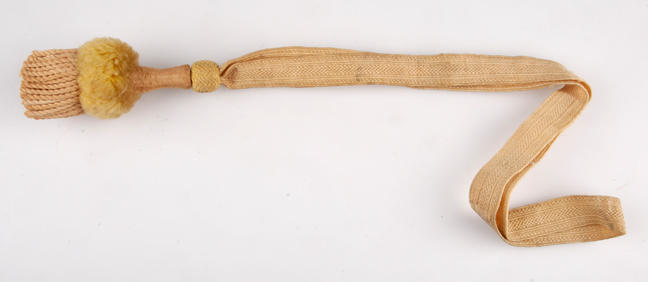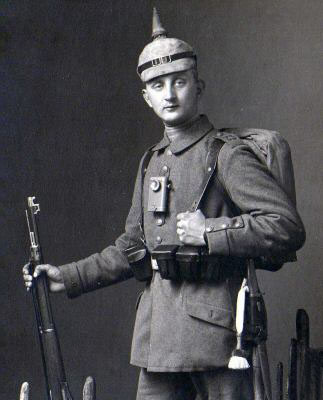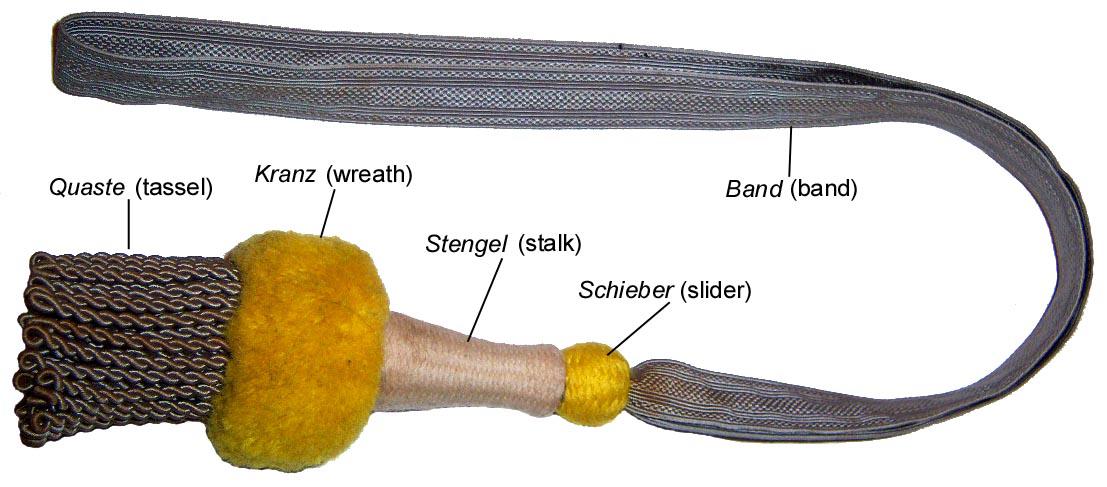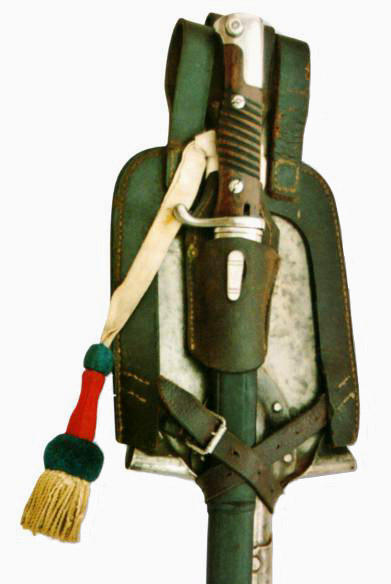Main Menu

M.1873 Troddel (Bayonet Knot)
Knotted around the bayonet frog, the Troddel has its origins in the saber knot, which was used to keep the saber attached to the Soldat's hand in combat. By the time of WWI, the Troddel had merely become a part of the complex system of insignia that the German Army used for unit identification.

Original pre-war/early-war 3rd Company Troddel.
Those of Gefreiter and Musketier rank should take care to wear only those Troddeln signifying the Third Kompagnie, i.e. colored yellow-white-yellow.
Knotted around the bayonet frog, the Troddel has its origins in the saber knot, which was used to keep the saber attached to the Soldat's hand in combat. By the time of WWI, the Troddel had merely become a part of the complex system of insignia that the German Army used for unit identification.
In the Pre War years,Imperial German infantry troops were organized into twelve (12) companies, identified by their tassels (Troddeln), AND by the company number on their shoulder board buttons.
In 1913, they added a 13th and 14th company for the new MG companies, and then a 15th and 16th company late in 1914. In late 1914, almost immediately, this system broke down due to volume and supply problems. In the Fall of 1915, the shoulder board buttons with company numbers were dropped from the field jacket and coat, leaving only the "peacetime" uniform with them.

Original photo clealry showing the Troddel
In March of 1916, shortages of cotton saw the tassels made only of recycled old cotton, AND, the ribbon and fringe went to gray instead of white, keeping just the colored parts the same, this new pattern was referred to as the Ersatztroddel.
Army administration tried to adhere to the wearing of the correctly "coded" tassels throughout the War, but the constant transferring and reassigning of troops broke the system down. Plus, by late 1916, the effects of the blockade were so bad, and local materials so scarce, that materials could not be found to continue production and production of tassels was completely stopped in January of 1917. What supplies left in inventory lasted a couple of months until all had been issued.
The Mannschaftstroddel
Each regiment in the German Army consisted of three battalions and each battalion had four companies. Each enlisted soldier wore the M1873 Troddel, and depending on what color combinations were used indicated the battalion and company. There were four colors used, each color signified a number: white for 1, red for 2, yellow for 3 and blue for 4. Soldiers used a clever phrase as a memory aid: "Wir Rauchen Gerne Brasil" (We like to smoke Brasil tobacco). This sentence should allow any soldier in the imperial army to learn the entire company colors.

Original late-war Ersatztroddel with
grey band and tassel with nomenclature.
The Stengel (stalk) of the Troddel represents the Battalion, the Kranz (wreath) and Schieber (slider) represent the company. So a white stalk with yellow slider and wreath is I Battalion, 3rd company. If you have a red stem with a blue slider and wreath, then you have II Battalion, 8th company (the 8th company is the 4th company in the second battalion).

Photos from
Johan Somer's Imperial German Field Uniforms
and Equipment 1907-1918.
Above: The M.1873 Troddel as worn on the bayonet.